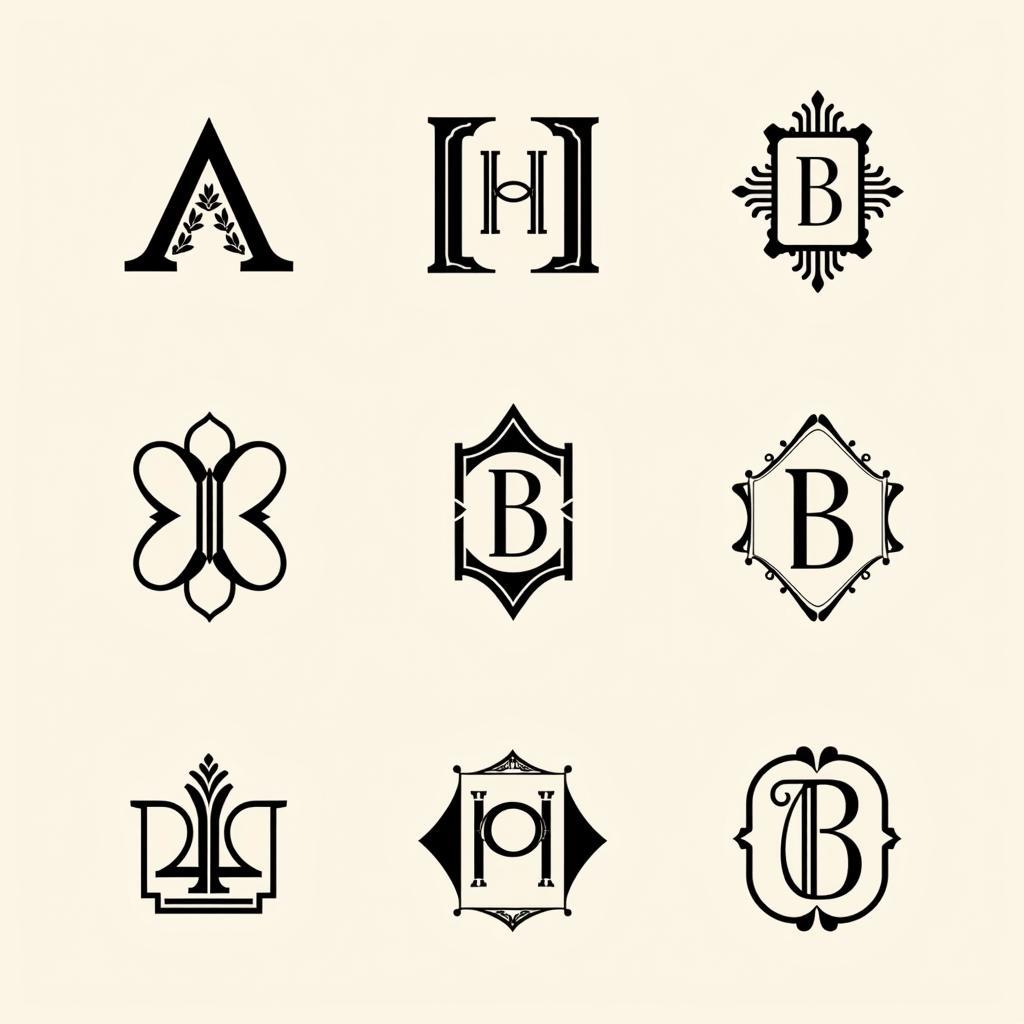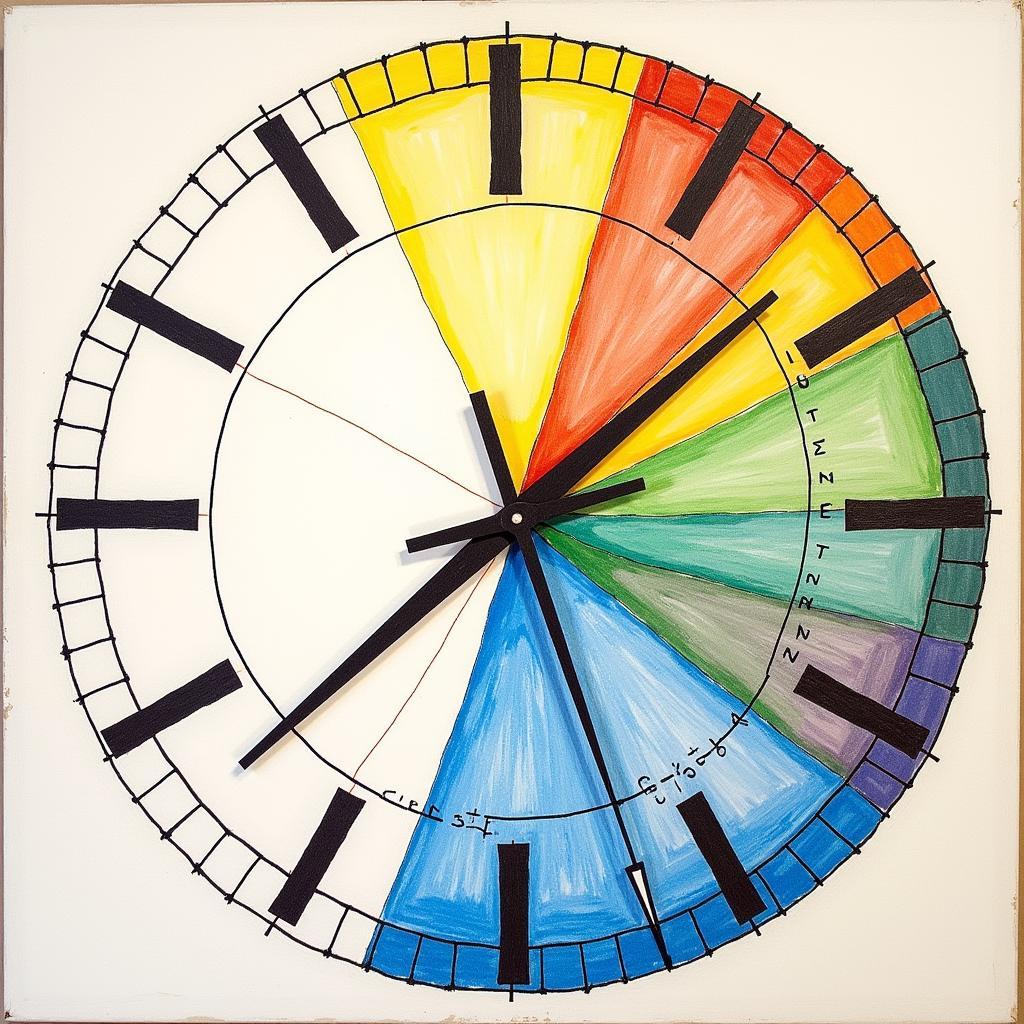B-24 Nose Art: A Canvas in the Clouds
B-24 Nose Art transformed the formidable bomber into a personalized expression of wartime hopes, fears, and humor. These vibrant murals, painted on the noses of B-24 Liberators during World War II, offered a brief respite from the grim realities of combat, fostering camaraderie and boosting morale among the crews. This article delves into the fascinating world of B-24 nose art, exploring its origins, symbolism, and enduring legacy as a unique form of wartime art. Let’s explore this fascinating intersection of art and history.
The Rise of B-24 Nose Art: From Practicality to Personality
Initially, markings on aircraft were purely functional, identifying squadrons and individual planes. However, as the war progressed, crews began personalizing their bombers, transforming the utilitarian nose into a canvas. This personalization started subtly, with nicknames scrawled beneath the cockpit windows. Gradually, these evolved into elaborate murals, often featuring pin-up girls, cartoon characters, fierce animals, and patriotic symbols. The B-24 Liberator, a workhorse of the Allied air forces, became a particularly popular canvas for this unique art form.
b 24 liberator nose art directory allows us to appreciate the artistic talent that emerged in the face of war. Many crews commissioned talented individuals within their ranks to create these artworks, using whatever paints and materials they could scavenge. The results were often surprisingly sophisticated, showcasing impressive artistry in a challenging environment.
B-24 Bomber Nose Art: More Than Just Decoration
Beyond their aesthetic appeal, B-24 nose art served a deeper purpose. They became potent symbols of unit pride, reflecting the shared experiences and bonds forged in the crucible of war. The artwork often commemorated hometowns, loved ones, or significant events, creating a tangible link between the airmen and the lives they left behind.
The artwork also offered a psychological boost, injecting a sense of individuality and humanity into the impersonal machinery of war. In a world dominated by death and destruction, these personalized expressions offered a small measure of control and a reminder of the values they were fighting to protect.
Deciphering the Symbolism: What Did B-24 Nose Art Represent?
The imagery chosen for B-24 nose art was often deeply symbolic, reflecting the hopes, fears, and anxieties of the aircrews. Pin-up girls, a popular motif, represented idealized femininity and served as a reminder of the lives they hoped to return to. Fierce animals, such as tigers and eagles, symbolized strength, courage, and aggression. Cartoon characters provided a touch of levity and escapism. Patriotic symbols, such as flags and eagles, reinforced the airmen’s dedication to their cause.
b24 bomber nose art reveals a rich tapestry of symbolic expression, offering a glimpse into the mindset of the men who flew these dangerous missions. Each piece tells a story, reflecting the individual experiences and beliefs of the crew. “What did the art represent for the individual airmen?” asked Dr. Amelia Reid, a WWII historian specializing in military culture. “It was a way for them to express themselves, to leave their mark, and to find a sense of identity in the chaos of war.”
Airborne Art and Military Aircraft Art: A Wider Perspective
The practice of decorating aircraft wasn’t limited to B-24s. Other bombers, fighters, and even transport planes were adorned with personalized artwork. Airborne art encompassed a wide range of styles and subjects, reflecting the diverse cultures and personalities within the armed forces.
Military aircraft art provides a broader context for understanding the phenomenon of B-24 nose art. It reveals a shared human impulse to personalize and imbue meaning into the tools of war, transforming instruments of destruction into expressions of hope and resilience. This tradition continues today, albeit in a more regulated form, reflecting the enduring power of art to connect us to our shared history.
Conclusion: B-24 Nose Art: A Legacy of Courage and Creativity
B-24 nose art stands as a testament to the resilience and creativity of the men who flew these iconic bombers. These vibrant murals, born from the crucible of war, offer a powerful glimpse into the hearts and minds of the Greatest Generation. They remind us that even in the darkest of times, the human spirit can find expression and solace in art. B-24 nose art continues to fascinate and inspire, preserving the memories and stories of those who served in the skies above.
FAQ
What is B-24 nose art?
B-24 nose art refers to the paintings and decorations adorning the noses of B-24 Liberator bombers during World War II.
Why did crews paint nose art on their B-24s?
Nose art boosted morale, fostered unit pride, and personalized the aircraft in a dehumanizing war.
What were common themes in B-24 nose art?
Pin-up girls, cartoon characters, fierce animals, and patriotic symbols were popular motifs.
What does B-24 nose art tell us about WWII?
It provides insights into the mindset, hopes, and fears of the aircrews who flew these dangerous missions.
Where can I find more information about B-24 nose art?
Numerous online resources and museums offer extensive collections and historical context on this unique art form.
What is the significance of B-24 nose art today?
It serves as a reminder of the courage, creativity, and human spirit that prevailed during World War II.
How was B-24 nose art created?
Crew members often painted the art themselves, utilizing whatever materials were available.
Need support? Contact us 24/7 at: Phone: 02462573573, Email: danteum@gmail.com or visit us at Savico Megamall, 7-9 Đ. Nguyễn Văn Linh, Gia Thụy, Long Biên, Hà Nội 10000, Việt Nam.



